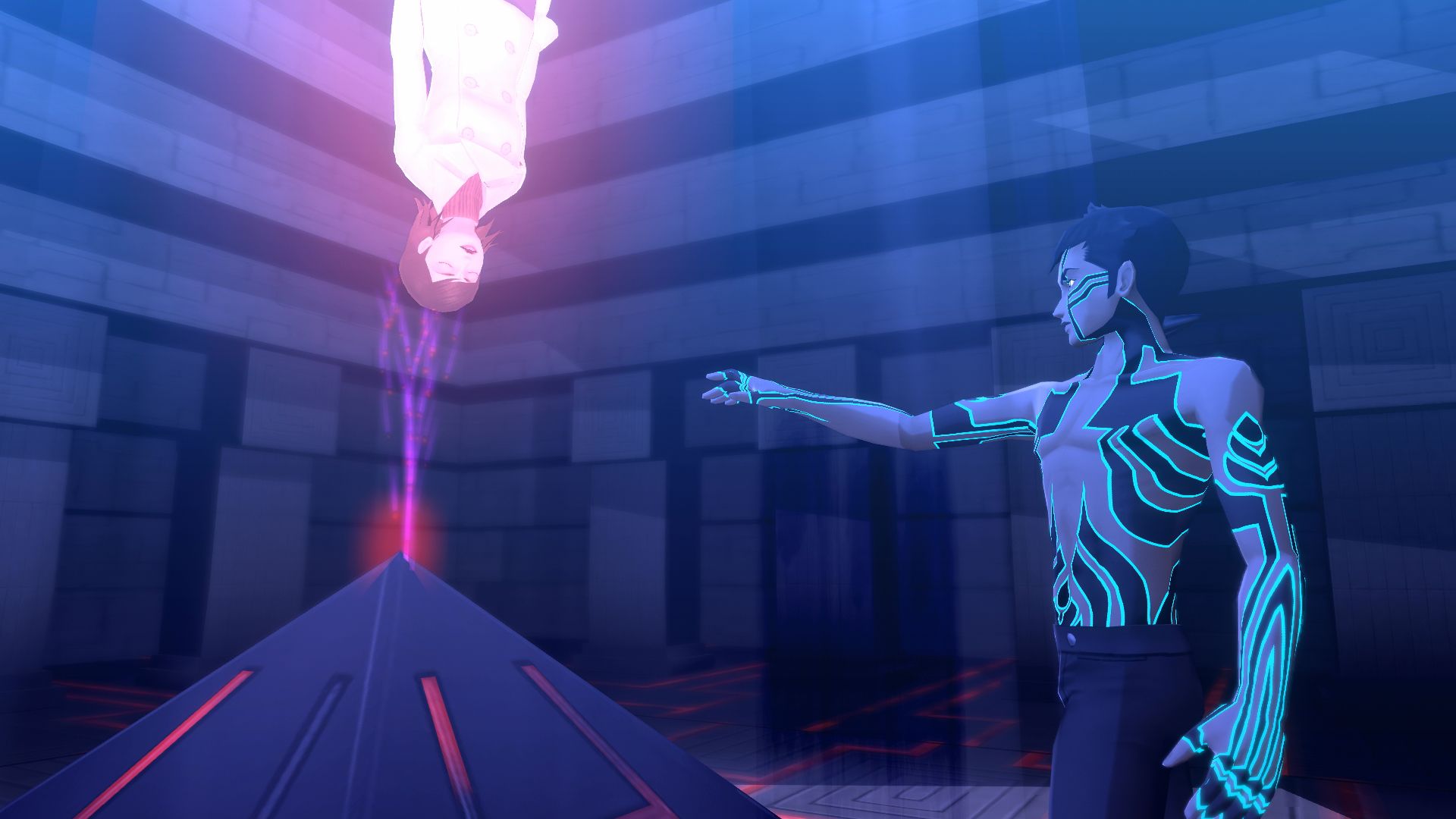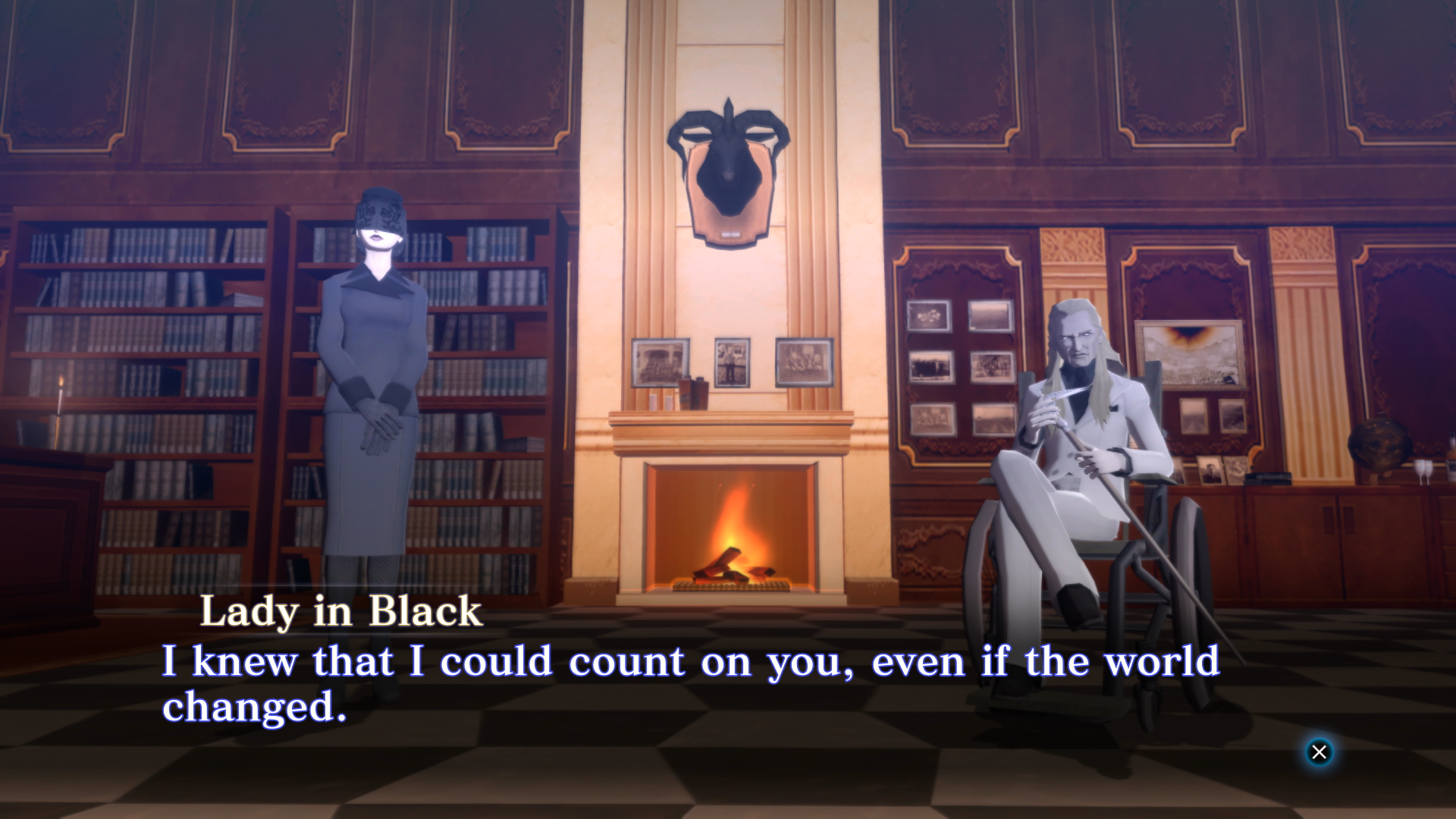There’s endless classics - and undoubtedly many will first think of the console’s two single-player Final Fantasy games, a great Dragon Quest, a pair of killer Persona titles, Kingdom Hearts, and even Sony-published gems like Rogue Galaxy and Dark Cloud. One of the all time greats, however, is Shin Megami Tensei 3: Nocturne. In the West, the Shin Megami Tensei series has always been something of a niche proposition. In the PS2 era, it was the sort of game that would sell to a close-knit audience of Japanese game-lovers only. Back in the day, Nocturne’s biggest mainstream selling point was a cameo from another Japanese game, Devil May Cry. The slightly ludicrous box sticker that advertised that cameo went on to become an internet meme. That’s slowly beginning to change, however. The popularity of Persona, which is essentially a spin-off to the core SMT series, is bleeding back to those games. So now is the perfect time to remaster one of the best games in the series, and the first that ever made its way West. Make no mistake - Shin Megami Tensei 3 Nocturne is an all-time classic. It’s a stone-cold banger. It hasn’t broken into the mainstream in the manner that Persona has, but it is every bit the equal to its PS2 contemporaries in P3 and P4 - but Nocturne and the main SMT series sets itself apart from those games in interesting ways.
Persona is all about slice-of-life, where the supernatural interjects into everyday life and generally exaggerates and shines a stark spotlight on real-world problems. Nocturne is practically the opposite: your character, the Demi-fiend, awakes in an apocalyptic world where demons are basically the only allies he can rely on. Human survivors are few and far between, and far from united. The demons are the core of the action, with the Demi-fiend able to recruit, fuse, and generally manipulate demons to build out combat options that then play out in a turn-based fashion that appears traditional at first glance but actually has a greater level of depth thanks to the Press-Turn system, a risk/reward mechanic that can make or break any encounter. The battles are challenging in a way that isn’t really the norm in the accessibility-minded JRPGs of today, but I think that’s a core part of what this game was then, for better and for worse. As a more old-school RPG, things like enemy strengths and weaknesses or buff and debuff skills aren’t just a build-dependent option - they’re an absolute necessity to survive.
The story that draws you through the battling is strong but also undoubtedly more threadbare than the Persona games. It’s fair to say that it’s a generally bizarre narrative, a far cry from anything that feels easily relatable. It also often feels as though the translation, which has been touched up and improved for this remastered release, is straining to truly keep up with the varied concepts being tossed out casually. With that said, there’s a lot to ponder in this narrative, with the story ultimately boiling down to a philosophical debate where the player is forced to choose a mindset to align themselves with to obtain one of Nocturne’s multiple endings. A game of this nature couldn’t be a classic if its narrative didn’t stick the landing, and while weird and unique, SMT3 does just that. So. The game is great, then. What about the remaster? Well, that’s the less exciting end of this bargain. You might be better off describing this as a HD port of the original rather than a HD remaster. It appears Sega and Atlus did what they could but ultimately faced a situation where an ancient game couldn’t be changed too much without creating a massive job. The result is a decent re-release riddled with compromises. The biggest and most obvious compromise is the frame rate; regardless of what device you play it on, this almost twenty-year-old game will never present above thirty frames-per-second. Most machines will crush this game now, of course, even laptops - but there’s a locked ceiling of 30fps. The non real-time cutscenes are still decidedly standard definition with letterboxing, presumably because source files were lost. There’s also an issue with over-compressed sound - though on PC, modders have already managed to issue a patch for that.
Visually it’s a crisp, good-looking affair. We’re not in that Nier Replicant or Mass Effect full model and texture replacement land, however. This is the same game presented at a higher resolution - but the art style of Nocturne actually lends itself well to a HD presentation. It brushes up really well - better than most games of this era. In other places SMT3 has been smartly tweaked and adjusted to make it more pleasant to play. There’s a variety of changes and additions that streamline certain processes that were frustrating in the original game, plus some DLC options that restore Dante’s cameo, offer alternative music tracks, and even add extra maps that can be used for grinding. There’s also a free DLC that adds an easier difficulty, which will be very welcome to those who really can’t get along with the brutal nature of the original - though I strongly recommend playing it as intended if you at all can. This is a HD Remaster where you should go into it with clear expectations. Like I said, it’s more like a HD port than a true remaster, and the price is pretty steep when you think about that and also recognize that the game launched with a complete slate of DLC. However, this is also a good quality, well-playing re-release of an all-timer - and that can’t be understated. The value conscious may want to wait for a sale, though. Plus, it has a DLC add-on that features Dante from the Devil May Cry series. What’s not to love? Shin Megami Tensei 3: Nocturne HD Remaster is out now for PC, PS4, and Switch. Version tested: PC, with a code provided by the publisher.


